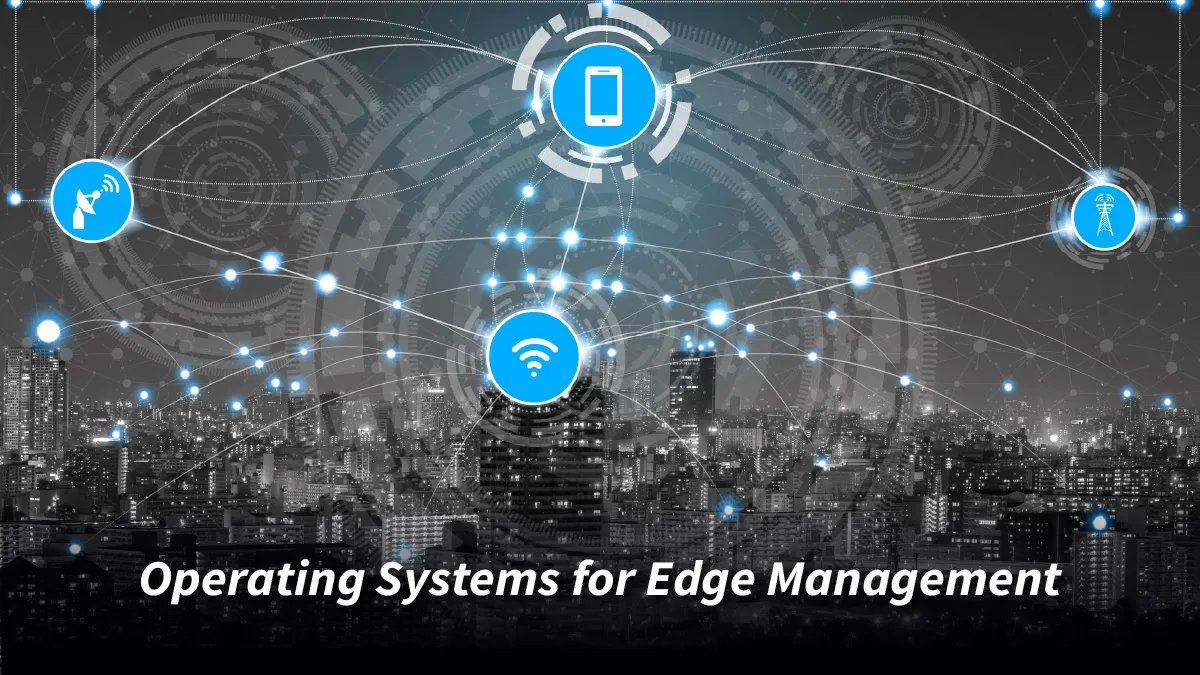Organizations are increasingly adopting Internet of Things (IoT) technologies. Edge management has emerged as a critical component of modern infrastructure that helps organizations to efficiently store & process data. It helps businesses enhance device management, optimize property management, and improve overall operational efficiency. Let us understand this interesting concept and its role in revolutionizing how companies collect, store, and manage their data.
What is Edge Management & Why is it Important?
Edge management refers to the practice of processing data near the source of data generation rather than relying solely on a centralized cloud infrastructure. It is particularly important in IoT, where vast amounts of data are generated by IoT devices. By managing data at the source (edge), organizations can achieve several benefits:
- Reduced Latency: Processing data closer to the source minimizes delays, which is crucial for real-time applications
- Bandwidth Savings: Localized processing reduces the volume of data sent to the cloud, saving bandwidth and costs
- Enhanced Security: Keeping sensitive data on site reduces the risk of data breaches during transmission
Operating Systems for Edge Management
Choosing the right operating system (OS) is important for effective edge management. The OS serves as the foundation of the entire software infrastructure. It impacts the performance and integration of edge applications. Here are some key factors to consider when selecting an OS for edge management:
- Footprint: It should be lightweight and have a minimal footprint, as many edge devices operate with limited resources.
- Security: It must enforce security and privacy policies by incorporating encryption, authentication, and access control.
- Maintainability: It should have training resources and support to ensure smooth operations.
- Real-time Capability: A hard, deterministic OS is suitable for applications requiring real-time performance.
Choosing the right OS can simplify operations, while the wrong choice may lead to challenges. Some popular OS in the IT industry are:
- Windows IoT – Microsoft’s Windows IoT provides robust security features and extensive management capabilities, making it suitable for enterprise applications. Its support for centralized updates and remote management simplifies device oversight across large fleets. It is particularly popular in retail and manufacturing industries, where it supports various applications ranging from point-of-sale (POS) systems to industrial automation.
- Linux Distributions – Linux offers flexibility and ease of maintenance, essential for edge devices with limited resources. Its lightweight nature allows efficient updates and bug fixes, which is crucial for stable operations. Popular distributions like Ubuntu Core and Yocto Project are specifically designed for IoT environments, providing a secure and customizable platform for edge applications.
- Phoenix-RTOS – This open-source OS is tailored for edge-IoT applications, supporting scalability from simple sensors to complex devices. Its microkernel architecture allows multiple applications to run concurrently on a single device. Phoenix-RTOS is gaining acceptance in smart home devices and industrial IoT solutions, due to its lightweight design and efficient resource utilization.
Also Read: Benefits and Real-Life Use Cases of AI and IoT
Recent Trends in Edge Management
A few trends are bringing about advancements in edge technology and further solidifying its role in IoT infrastructure. Some of the notable trends have been listed below:
- Integration with AI – The incorporation of artificial intelligence (AI) at the edge allows for smarter decision-making. For example, predictive maintenance can be implemented by analyzing device performance data locally before issues arise. Companies like Siemens use AI algorithms at the edge in manufacturing environments to predict equipment failures before they occur. The Senseye Predictive Maintenance by Siemens enhances edge management by using AI for real-time machine monitoring, enabling proactive maintenance that reduces downtime and boosts efficiency.
- Collaboration between Tech Giants – Companies like Accenture and Microsoft are actively collaborating to develop comprehensive edge solutions that integrate seamlessly with existing cloud infrastructures. Their focus on creating hybrid models allows businesses to benefit from both centralized and decentralized systems. For example, Microsoft’s Azure Stack Edge combines cloud capabilities with local processing power, enabling businesses to run applications closer to their data sources.
- Standardization Efforts – Initiatives like the Edge-IoT Alliance aim to establish common standards for OS used in edge management. This will facilitate interoperability among various devices and platforms, enhancing system efficiency. Standardization efforts are crucial, as they help reduce fragmentation and promote broader adoption of edge technologies.
Future Growth Prospects in Edge Management
Rapid advancement of digital technologies and the increasing reliance on IoT devices are driving a paradigm shift in how data is processed and managed. Organizations are seeking more efficient solutions to handle the growing volume of data generated at the edge, leading to innovative approaches that enhance performance and responsiveness. As technology continues to evolve, several trends are likely to shape the future of edge management:
- Increased Adoption of 5G Technology – The rollout of 5G networks is set to revolutionize connectivity for edge devices by providing significantly higher speeds and lower latency. This advancement will enable more complex applications at the edge that require real-time processing capabilities, such as autonomous vehicles, remote healthcare, and smart manufacturing.
- Growth in Edge AI Applications – AI is increasingly being implemented at the edge, enabling applications that use machine learning for predictive analytics and anomaly detection directly on devices. This allows organizations to analyze data locally, reducing latency and minimizing the need for constant cloud communication. For instance, in healthcare, edge AI can enable real-time monitoring of patient vitals through wearable devices, alerting medical staff immediately if any anomalies are detected. Industries like manufacturing are adopting Edge AI for predictive maintenance, using local algorithms to analyze equipment performance and forecast potential failures. This proactive approach reduces downtime and optimizes maintenance schedules, resulting in cost savings and improved efficiency. The evolution of edge AI is expected to usher in advanced applications that enhance decision-making across various sectors.
- Enhanced Interoperability Standards – Organizations are increasingly adopting multi-vendor strategies for their IoT deployments. This is boosting the demand for interoperability standards that enable seamless communication between different devices and platforms. Enhanced interoperability will streamline operations and foster innovation by enabling organizations to mix and match solutions from different vendors without compatibility issues. For instance, in a smart city project with sensors from multiple manufacturers, standardized protocols ensure effective communication and cohesive data collection. As these standards gain wider adoption, organizations will enjoy greater flexibility and scalability in their edge management strategies.
In Conclusion
Edge management represents a transformative shift in how organizations approach IoT infrastructure. By processing data closer to its source, businesses can reduce latency, conserve bandwidth, and improve security, all of which contribute to enhanced decision-making and optimized resource use. The future of edge management looks promising with ongoing developments in technology and collaboration among industry leaders. Embracing these changes will empower organizations to thrive in an increasingly connected world.
































